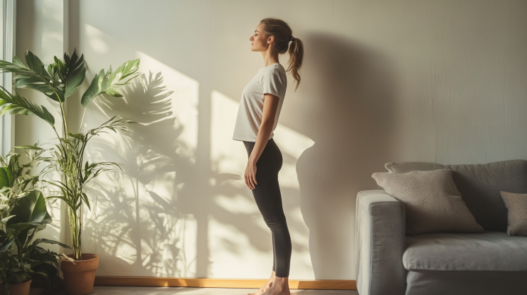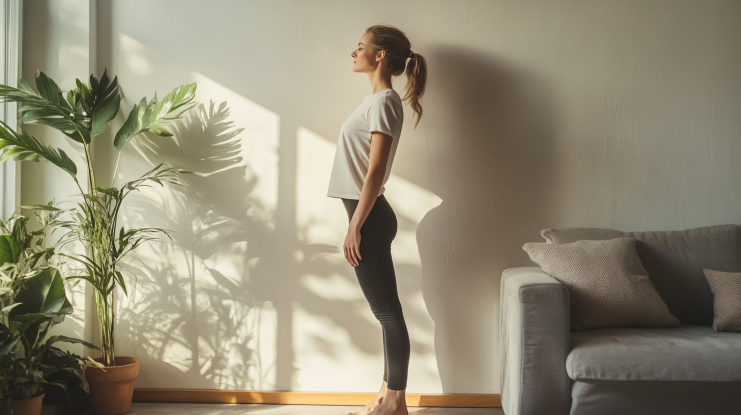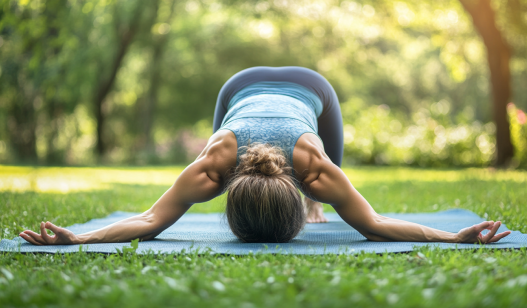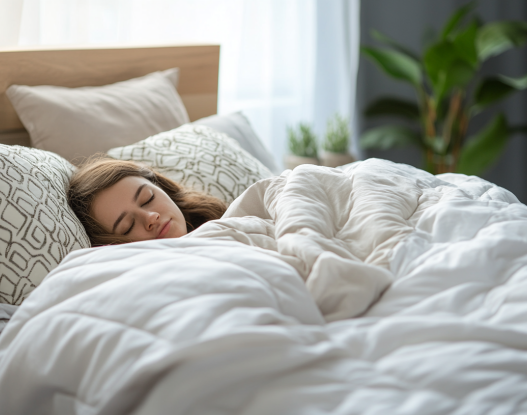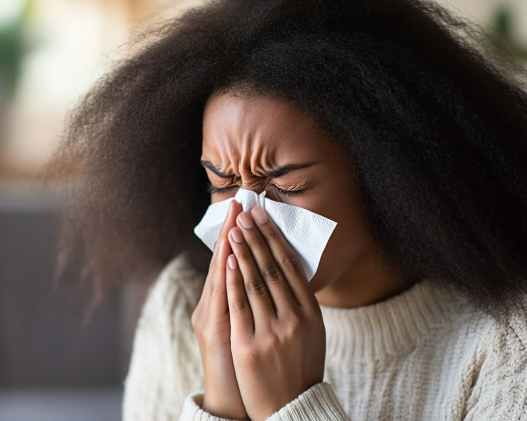After a meal, we all have our routines. Do you sit, lie down, or stand? We’ve all heard the saying “Take a hundred steps after a meal,” but many people are skeptical about how exercising right after eating could impact health. However, the question arises: If you sit or lie down after eating, won’t that lead to weight gain?
A surprising new study has revealed something amazing: A simple post-meal action, one many of us tend to overlook, not only boosts health but also helps burn excess fat!
The Post-Meal Standing Trick That Burns Fat
In October 2023, researchers from Japan published a study in the International Journal of Environmental Research and Public Health, showing that standing for just 30 minutes after a meal can significantly increase energy expenditure compared to sitting. Standing burns 0.16 more calories per minute than sitting!
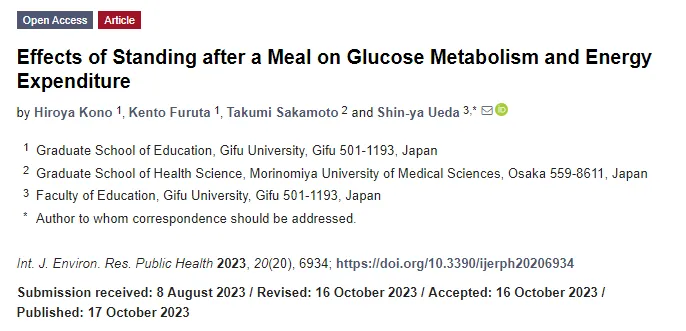
Research screenshots
The study involved 15 young male participants, all healthy, non-smokers, and free of any diseases or medications. They had to eat dinner before 9 PM the night before, fast until breakfast the next day, and then consume 300 grams of rice as part of a carbohydrate load before either sitting or standing for 120 minutes.
Researchers used a respiratory analysis system to measure oxygen consumption, carbon dioxide production, and the respiratory exchange ratio to calculate the energy expenditure for each participant under different postures.
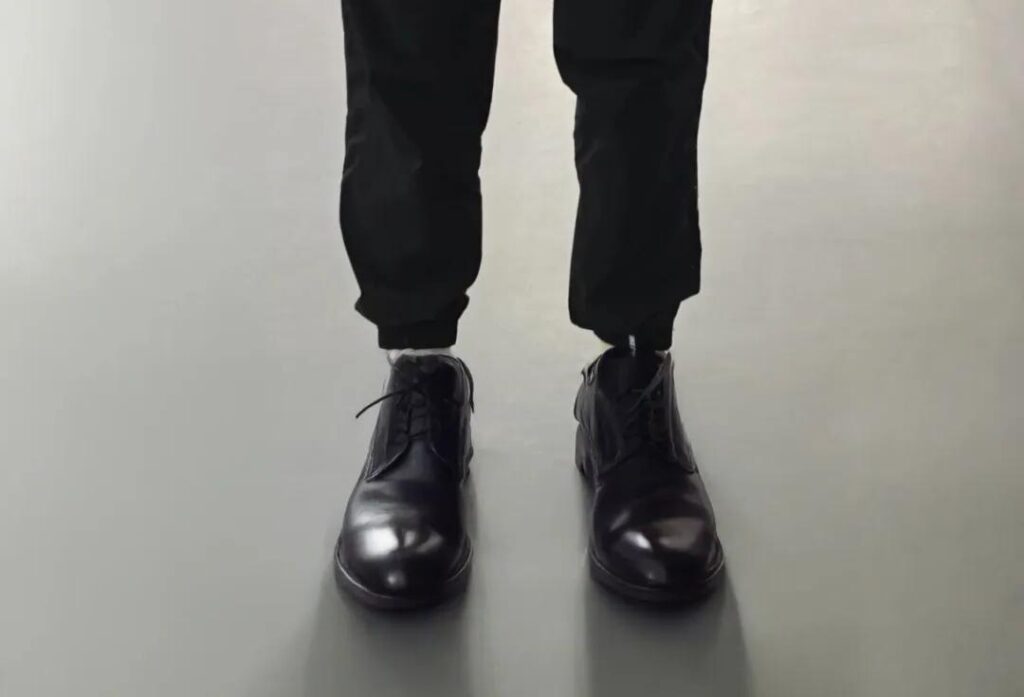
The results were clear: Standing after eating increased energy expenditure! Standing after lunch consumed more energy than sitting, with participants burning an additional 0.16 calories per minute. It may not seem like a lot, but if you stand for 4 hours each day instead of sitting, you’ll prevent gaining 1.6 kg of fat over the course of a year! That’s an extra 236.1 calories burned every day, equivalent to eating a slice and a half of chocolate cake without gaining weight.
Standing After Meals: The Benefits You’re Overlooking
What should you do after a meal—lie down, sit, or stand? Standing may seem like a passive action, but it offers multiple benefits!
Lying down after a meal can cause food and stomach acid to reflux into the esophagus, leading to heartburn and acid reflux, which doesn’t help with weight management. Sitting still after eating, on the other hand, doesn’t aid digestion and promotes fat accumulation, especially in the abdominal area. Standing instead can burn more calories, improve circulation, and aid digestion.
Standing against a wall is a great way to engage the entire body’s muscles, helping you burn more calories while tightening your body and promoting fat loss.
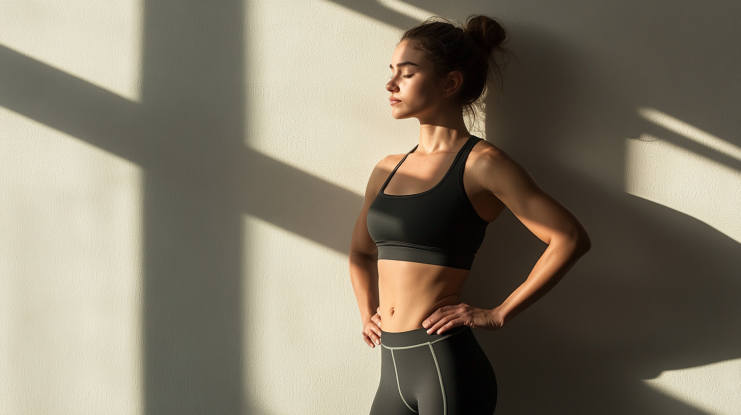
Five Expert-Recommended Standing Exercises to Boost Your Health
Studies show that standing for just 3 hours a day, five days a week, can have the same benefits as running a marathon in terms of muscle engagement and calorie burn. If you combine standing with light movements, the calorie-burning effect increases.
1. Wall Stand – Relieve Back Pain and Burn Fat
Stand with your back touching the wall, from your head to heels, maintaining a natural posture. Hold for a few minutes. This strengthens back muscles and increases stamina. Stand this way for 25 minutes after each meal, and within two months, you may notice weight loss!

2. Wall Push-Ups – Ease Shoulder Tension
Face the wall, stand shoulder-width apart, with your hands on the wall, a full arm’s length away. Slowly lower your body by bending your elbows, then push back up. This exercise relieves tension in the front shoulder muscles and can reduce discomfort with consistent practice.
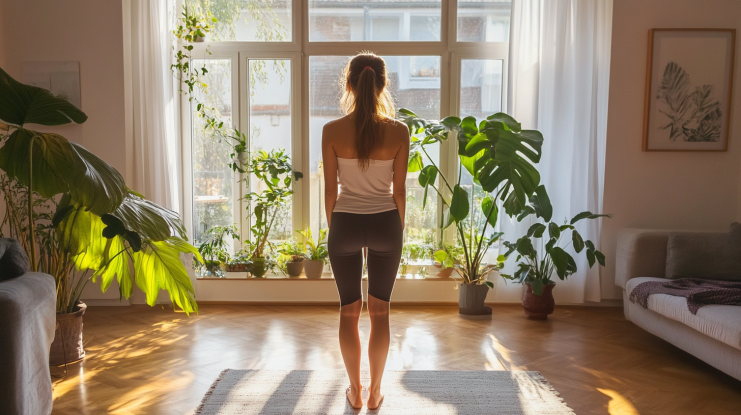
3. Chest-Out, Belly-In Stand – Prevent Osteoporosis
Osteoporosis can lead to fractures, especially in older adults. Regular standing can help strengthen the spine and reduce fracture risks. Aim for 5-30 minutes of “standing therapy,” keeping your back straight, shoulders relaxed, and chest and stomach engaged. This will protect your spine and promote bone health.
4. Hands Behind Back Stand – Help with Fatty Liver
Many people slouch while standing, which increases strain on the spine and chest, impeding breathing. Instead, try standing with your hands behind your back to relax your posture. This can relieve pressure on your back and chest, and some individuals may even see improvement in mild fatty liver disease conditions after a couple of months.

5. Post-Meal Stand – Reduce Acid Reflux
For those suffering from gastroesophageal reflux disease (GERD), standing for 15 minutes after a meal can help prevent discomfort, unlike sitting or lying down, which can exacerbate reflux. Over time, regular standing may help the lower esophageal sphincter regain function and reduce symptoms.
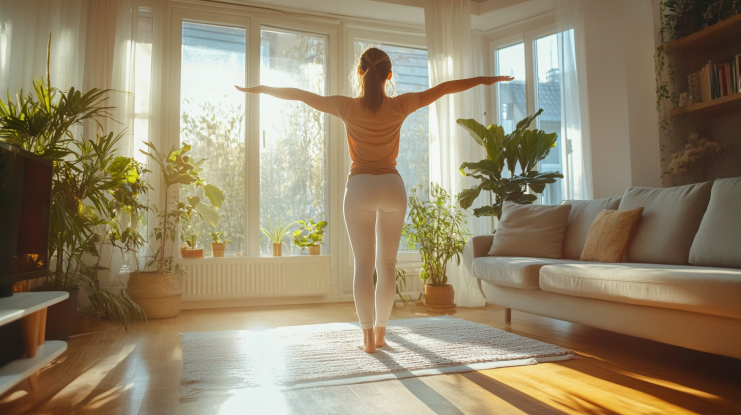
Conclusion: A Simple Action for Better Health and Less Fat
It turns out that standing after a meal is a surprisingly effective way to improve digestion, promote fat burning, and enhance overall health. Rather than slumping into a chair, take a moment to stand. It’s an easy and healthy habit that could save you from gaining unnecessary fat over time. Give it a try—you may just find that standing for a few minutes after meals could be the change your body needs!







